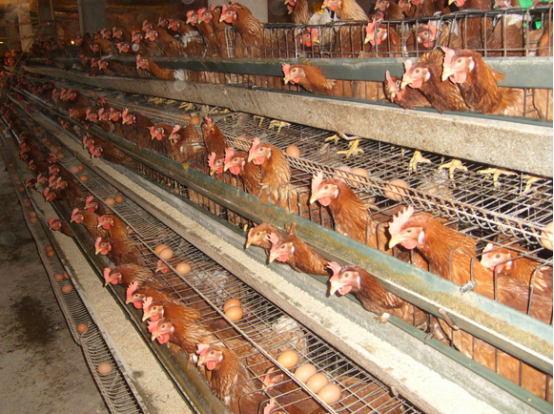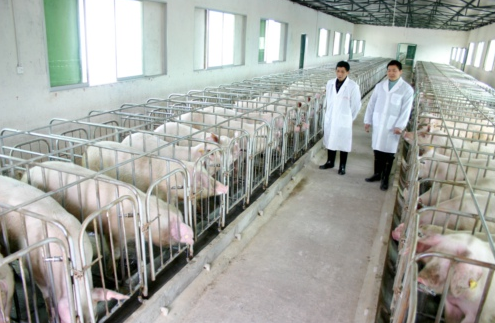This is a good way to keep warm work in various livestock and poultry houses.
Winter warming is often bred with spring cold, and the rainy season is in the transitional season of late winter and early spring. It is hot and cold, so it is necessary to continue to do the warm work of the bar. If the livestock and poultry house does not work well, it will not only affect the normal growth and development of livestock and poultry, but also cause some common diseases of livestock and poultry, which will seriously affect the breeding benefits. Then, what kind of work is needed to keep warm the livestock houses? Let's tell everyone how to do warm work. Cattle and sheep warming measures pay attention to the following points: First, the renovation of the bar to keep warm: the window of the house should be closed with plastic film, plugging holes, to prevent thieves; the glass of the window should be cleaned to facilitate the use of light; cover the shelter. Yak, lamb and childbirth can be installed in the house. Second, the appropriate increase in feed energy: in harsh weather conditions, pregnant animals are improperly raised, easily lead to abortion of pregnant females, and even mother and child died. To increase the supply of concentrate, cows should feed 1~2 kg of concentrate per day, and the supply of concentrate should be increased by 20%. At the same time, more succulent feed such as silage and carrots can be fed. The household can feed the mixed concentrate and add some bone powder and salt as appropriate. At the same time, it is necessary to maintain sufficient and suitable temperature for drinking water. The temperature of the water is preferably 37 °C. Poultry warming measures First, do a good job in keeping warm the poultry house: the impact of low temperature on the production performance of poultry is very obvious. Appropriately increase the stocking density, close the doors and windows, add straw curtains, drink warm water and heat the stove to heat (but have a chimney) to keep warm and keep the temperature of the poultry house not lower than 3 °C. Second, appropriate increase in feed energy: in ice and snow weather, to increase the proportion of energy feed in the diet, you can add 10% to 20% of the corn on the basis of the original, while increasing the amount of feed according to the size of the body, the temperature drops At 3 ° C, the feed amount per chicken per day increased by about 5 grams, and then gradually returned to the original feed level after the cold flow. Third, deal with the relationship between insulation and ventilation: due to the lower temperature, the poultry house doors and windows are closed more tightly, the ventilation is reduced, ammonia and other harmful gases gather, easy to induce diseases such as poultry respiratory tract. When the temperature is high at noon, it is necessary to open the window to ventilate, effectively handle the relationship between ventilation and warmth; timely remove the feces and debris in the poultry house, so that the air in the house is fresh and the oxygen is sufficient. Pig cold protection measures Pig warmth is very important, pig farmers to do the following: First, strengthen the cold and keep warm: the focus of the cold-keeping and warmth of pigs is the sow's delivery room and piglet nursery. It is necessary to make full use of the existing conditions to improve the insulation performance of the pig house. Closed pig houses should use plastic film, foam board, old bags and other materials to close the north side window to prevent cold wind from entering the pig house; the south side window should also be closed, but some ventilation holes should be left; the open pig house The open part can be closed with a plastic film, in particular the north side of the pig house must be closed. When there is a sun in the day, properly open the south side window to ventilate. Second, provide additional heat for piglets: piglets are prone to illness and death under cold stress. In cold conditions, additional heat is provided for newborn piglets and newly weaned piglets by heating in a stove (but with chimneys), installing infrared heat lamps, and heating plates. 3. Appropriate increase in feed energy: Under heavy snow and severe cold conditions, the amount of energy and feed required by pigs is greatly increased. If the feed supply is insufficient, the growth performance of pigs may be degraded, and growth may be stagnant or even become a dead pig or death. Therefore, in the cold weather, the pregnant sows increase 1 kg of feed per head per day. Other pigs (piglets, fattening pigs, lactating sows) should not limit the feed intake and should be fed open. It is also possible to add 10% to 15% of energy feed such as corn, wheat, and brown rice on the basis of the original. Fourth, strengthen feeding management: In particular, we must strengthen the management of suckling pigs, focusing on preventing freezing and freezing, freezing piglets, allowing suckling pigs to eat colostrum, and strengthening the feeding of suckling pigs; Let the pig manure and urine remain in the pig house, control the concentration of harmful gases, and do not exceed the standard. Huinong School has more relevant agricultural technology knowledge, and continue to pay attention to the Hui Nong School to answer questions during your breeding process. Disclaimer: Some of the content and information in this article are from the Internet. This article is reproduced for the purpose of transmitting more information and learning. It does not mean endorsing its views or confirming the authenticity of its content. If the reprinted content involves copyright issues, please contact the administrator immediately, we will change or delete the relevant articles to protect your rights. This website does not make any commitment to the consequences of using the information and services on this website. Source: Qibei Net How should I eat maize every day? We need to control the amount of corn, according to the dietary guidelines, the amount of staple food we use in our lives should be controlled at 250 grams to 400 grams, and the ratio of coarse to fine grains is one to three or one to four, which simply means that about 130 grams of corn can be used every day, in addition to the appropriate reduction in the intake of staple food, let's say half a bowl of rice or a steamed bun, so as to avoid excessive calorie intake in our bodies. Mottled Waxy Corn,Mottled Gluten Corn,Mottled Glutinous Corn,Mottled Gluten Glutinous Corn Jilin Province Argricultural Sister-in-law Food Co., Ltd. , https://www.nscorn.com


It is also important to note that when eating corn, it is advisable to eat the whole cob together to better control our blood sugar. If corn is processed into corn juice or cornmeal food, the nutrients inside are often lost and what remains is basically sugar, which is often higher on the glycemic index and more likely to lead to a rise in blood sugar, for example, the glycemic index of ordinary corn is only 55, but with foods such as cornmeal, the glycemic index often reaches 68, so it is important to eat the right corn.